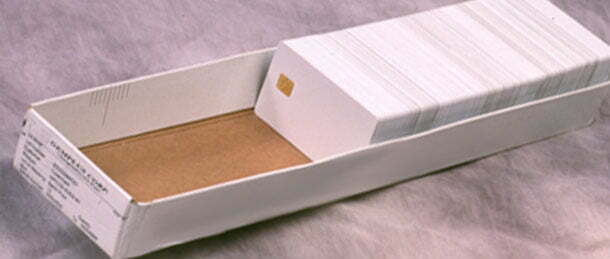
Learn the standard ID size in inches, ID size in pixels, ID size in millimeters, ID size in centimeters
When you open your wallet you likely see a number of plastic cards that are all precisely the same size. Obviously, you say to yourself, ID card sizes have been standardized. Why then need we concern ourselves with this issue? Outside of intellectual curiosity, it is important to understand card sizing in case you are asked to produce a different sized card for a specific need in the future. You also need to understand the capabilities of the equipment you are purchasing.
Cards are three-dimensional objects and thus have a length, width, and thickness. The official size for the common ID card was codified by the International Organization for Standards (ISO) in the specification document ISO 7810 (Identification Cards–Physical Characteristics).
Referring to the card type as ID-1, the dimensions were defined as 3.370 inches wide and 2.125 inches high. The thickness is 0.030 inches. This is the size that is commonly referred to as CR80 and encompasses all financial cards and most other common cards. Virtually every card printer and card production software package is designed to handle ID-1 (or CR80) cards.
-----
The standard ID-1 or CR80 ID card size in inches is 3.370 inches wide by 2.125 inches high.
The standard ID-1 or CR80 ID card size in millimeters is 85.6 mm wide by 53.98 mm high.
The standard ID-1 or CR80 ID card size in centimeters is 8.56 cm wide by 5.398 mm high.
The standard ID-1 or CR80 ID card size in pixels is 1012 pixels wide by 638 high at 300 dpi.
-----
While CR80 is the standard size used in, by far, the majority of implementations, there are situations in which other sizes are preferable. For example:
While cards are available in a variety of thicknesses, the most common for ID cards is 0.03 inches. This is 30/1000 of an inch or, as it is commonly called, 30 mil.
A card that looks normal but feels a little bit more flexible is typically a 20-24 mil card, while the very thin, almost paper like cards, feature a 10-15 mil thickness. Cards thicker than 30 mil are still common in certain access control environments such as door entry and parking control. These cards are typically single application cards, dedicated only to the specific access control function. This is the case because the thicker cards – above 30 mil – will not fit or will have difficulty fitting into most card reading equipment, payment terminals or ATMs.
In most instances, a card project will utilize the CR80 standard card. Nearly every common piece of software and hardware will support this format. Many devices will support multiple formats, providing the flexibility to incorporate other card sizes if required. In certain cases, devices can be ordered to support one card type OR another card type.
As an example, some stored value card vendors offer magnetic stripe stored value programs in either CR50 or CR80 formats. The devices, such as readers and add-value terminals, ship from the manufacturer with the capability to accept one or the other–but not both–sizes. The CR50 size is commonly found in door access systems utilized in hotels that opt for this smaller size over the CR80 format.
The most important lesson is to stick with the standards whenever possible. This will make your life easier and keep your future options open. Remember, however, if you think that you will need to produce other card sizes in the future, be sure to invest in components that will support these sizes. For most of us, this will not be an issue … and we need only remember the mantra, “CR80, 30mil; CR80, 30 mil; CR80, 30 mil.”
Size spec - Length(Inches) x Width(Inches)
CR50 - 3.5 x 1.75
CR60 - 3.25 x 2.312
CR70 - 2.875 x 2.125
CR80 - 3.370 x 2.125
CR90 - 3.63 x 2.37
CR100 - 3.88 x 2.63
ID-1 - 3.370 x 2.125
ID-2 - 4.134 x 2.913
ID-3 - 4.921 x 3.465
*CR80 and ID-1 are different names for the same standard size.
Calculating the number of cards remaining in your card office
We know that the standard ID card is 30 mil or 30/1000ths of an inch in thickness. Thus we can easily calculate that about 33 cards packed tightly together will be 1 inch thick (1000 divided by 30 = 33.3).
When you need to estimate the number of cards remaining in a box or in the hopper of a card printer, simply measure or estimate the number of inches and multiply by 33. Typically, the actual number will be slightly less than your estimate because of minute spaces between each card in the stack.millpixel




